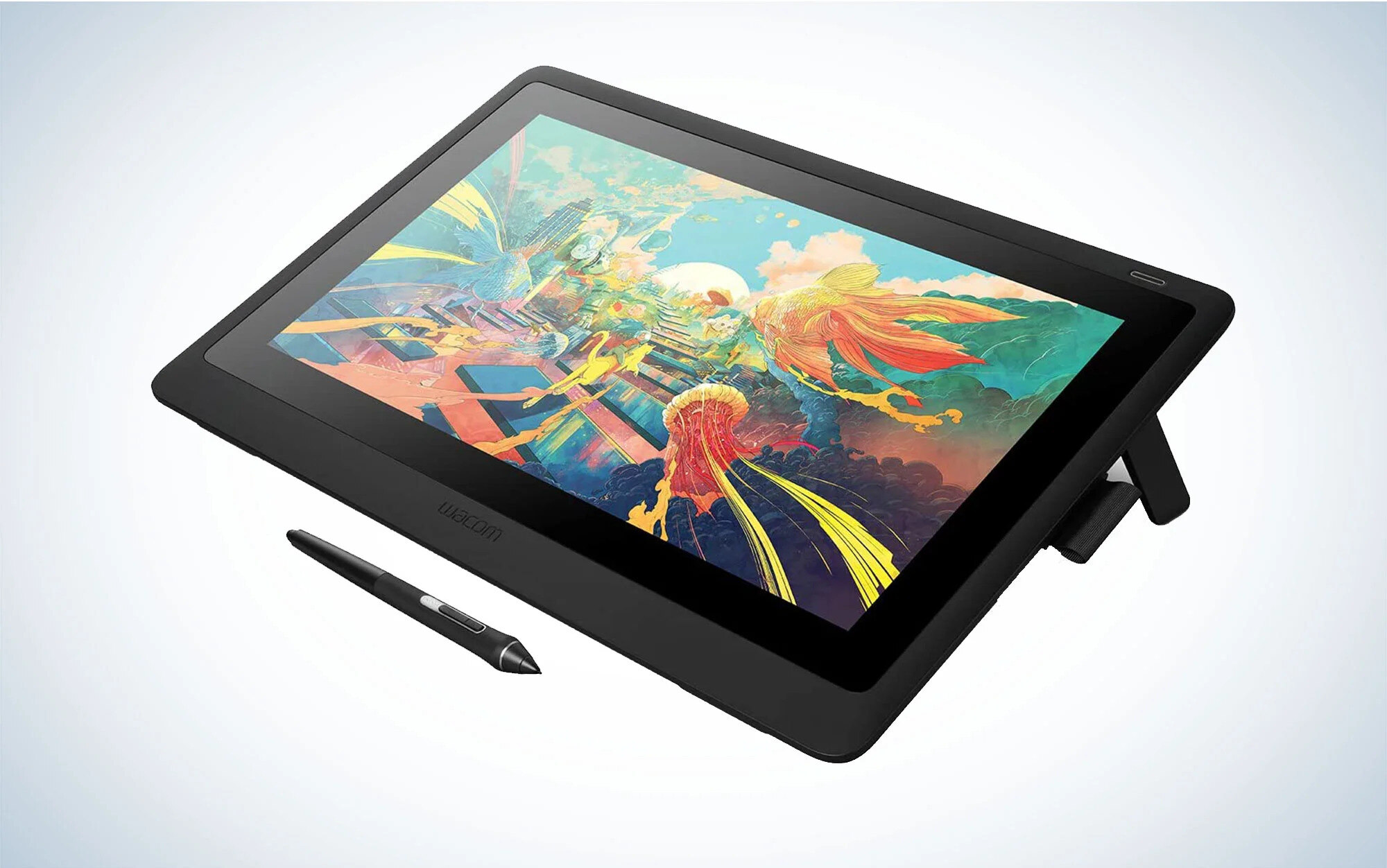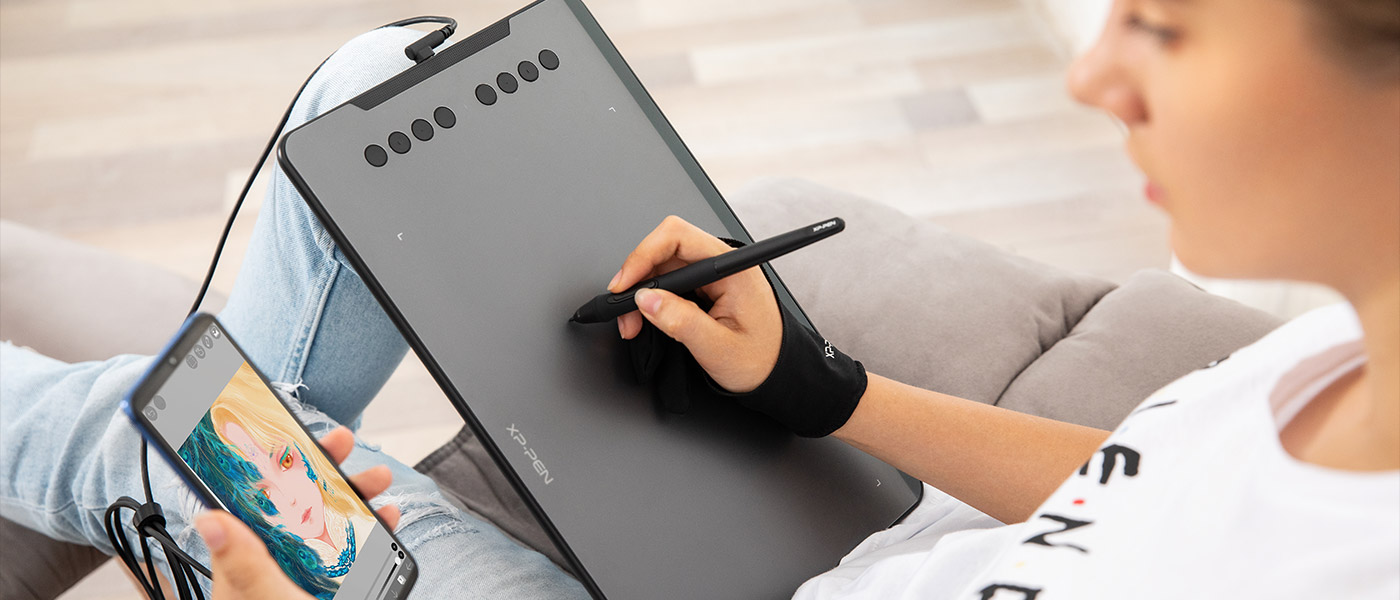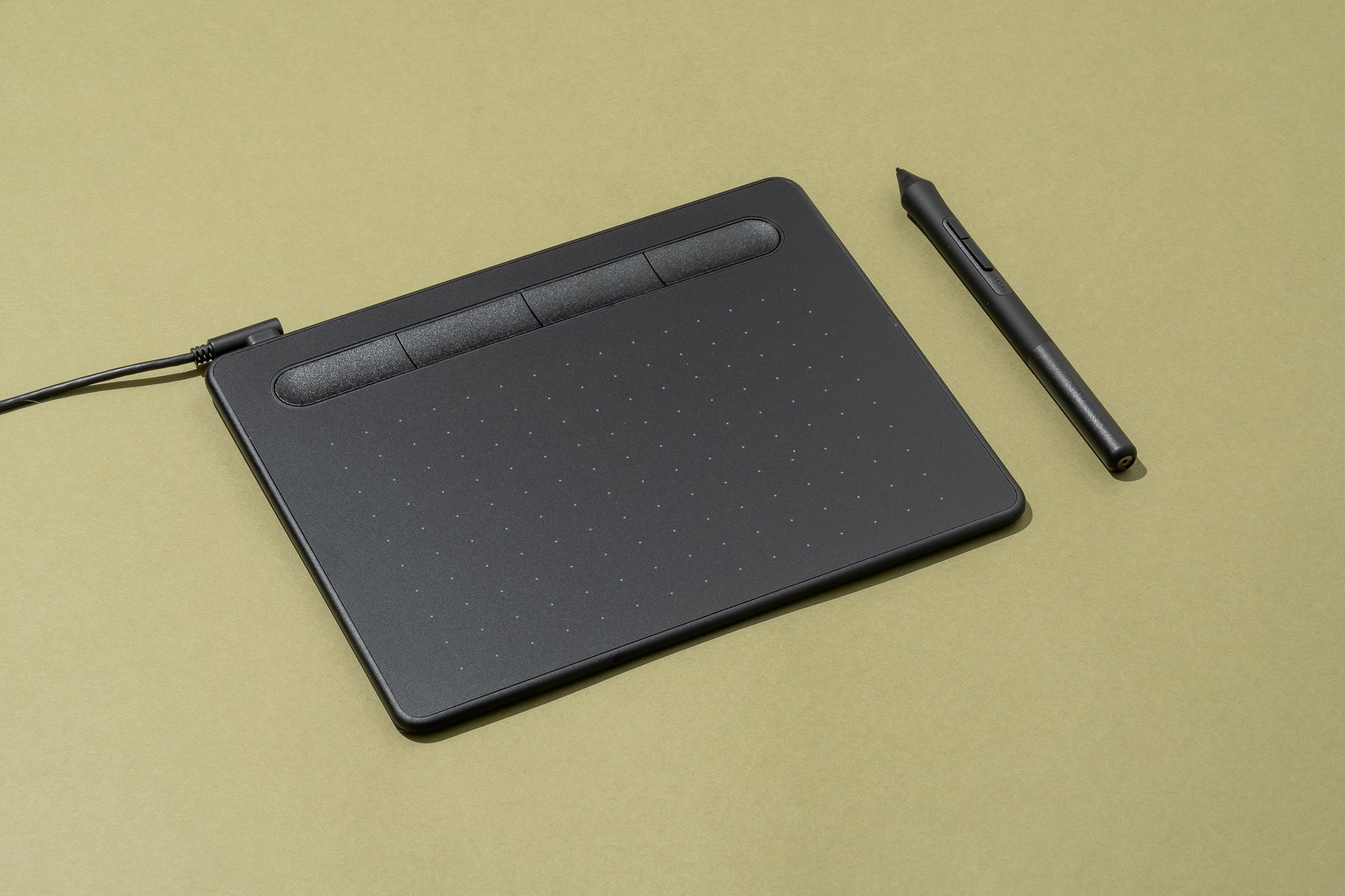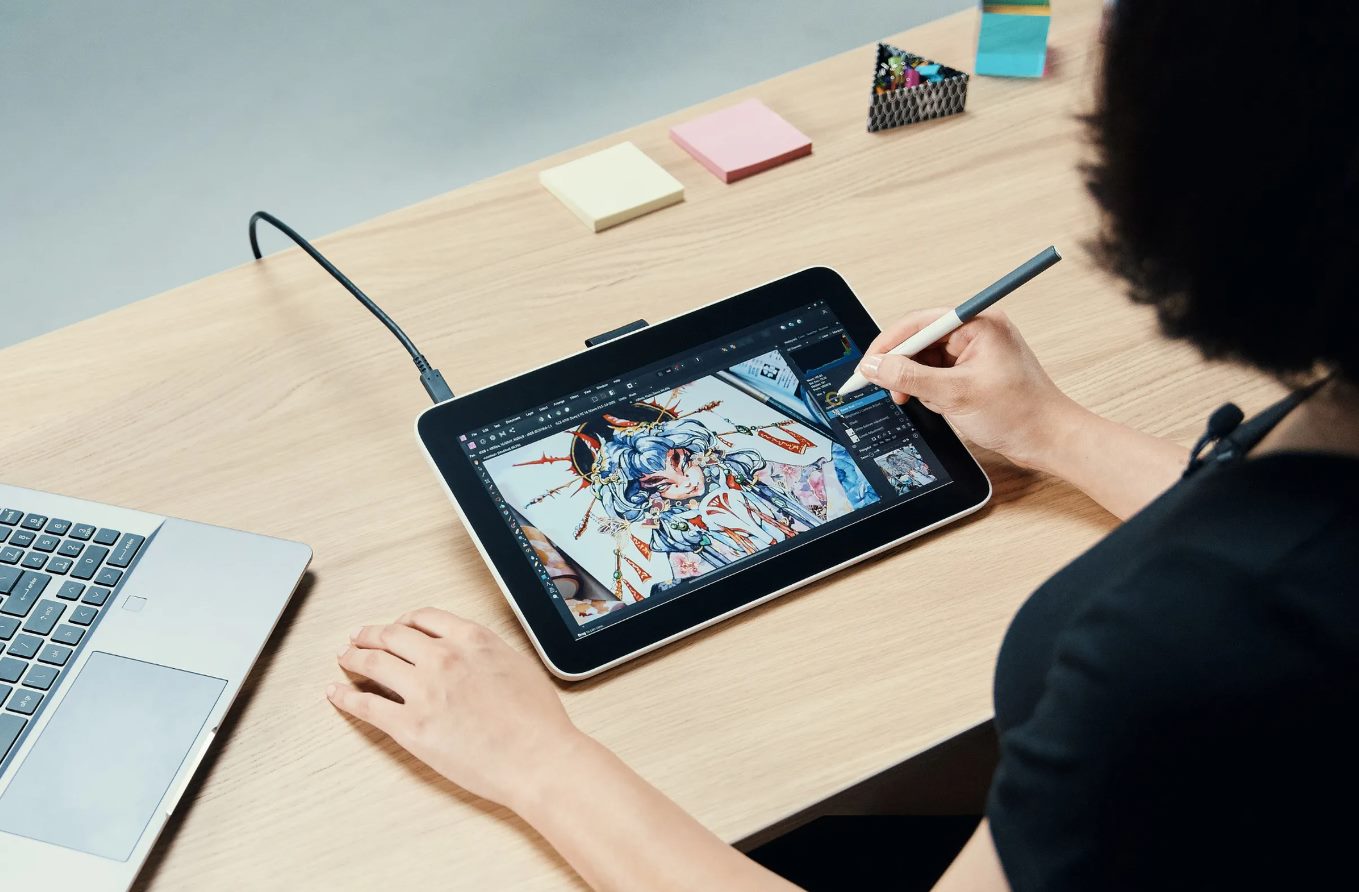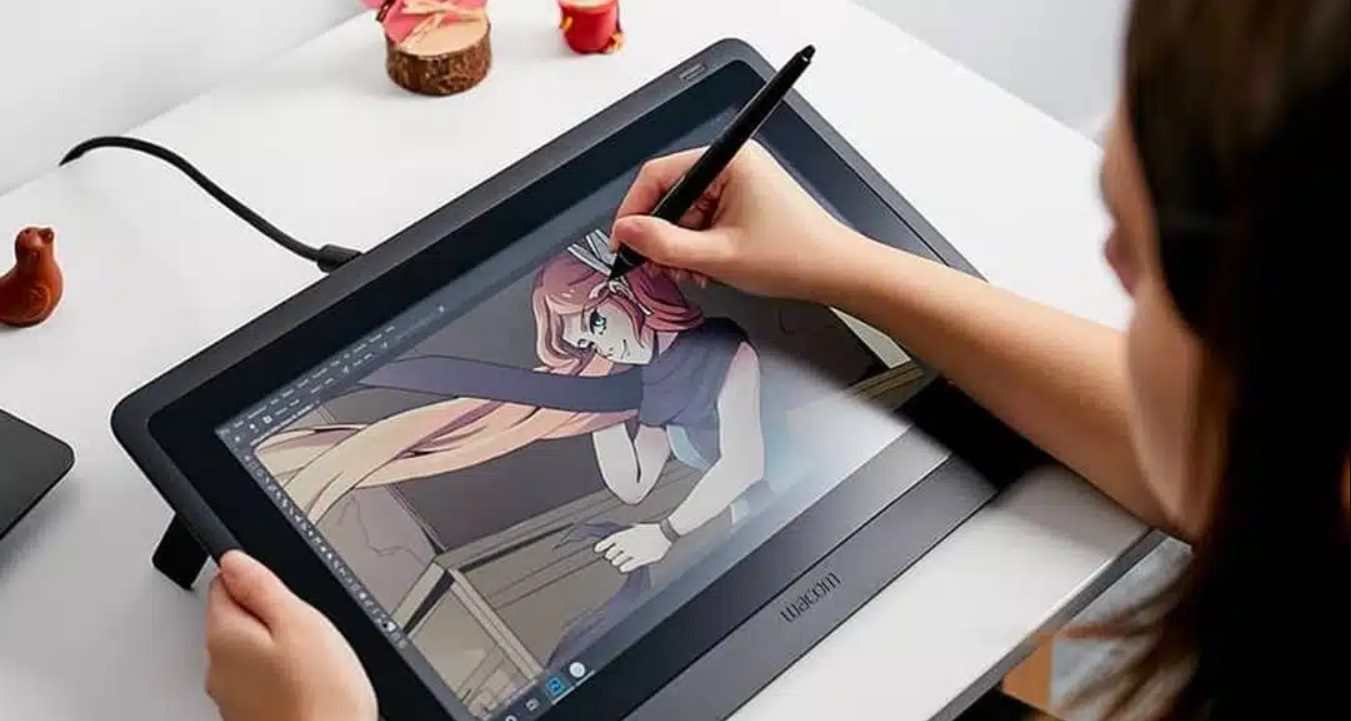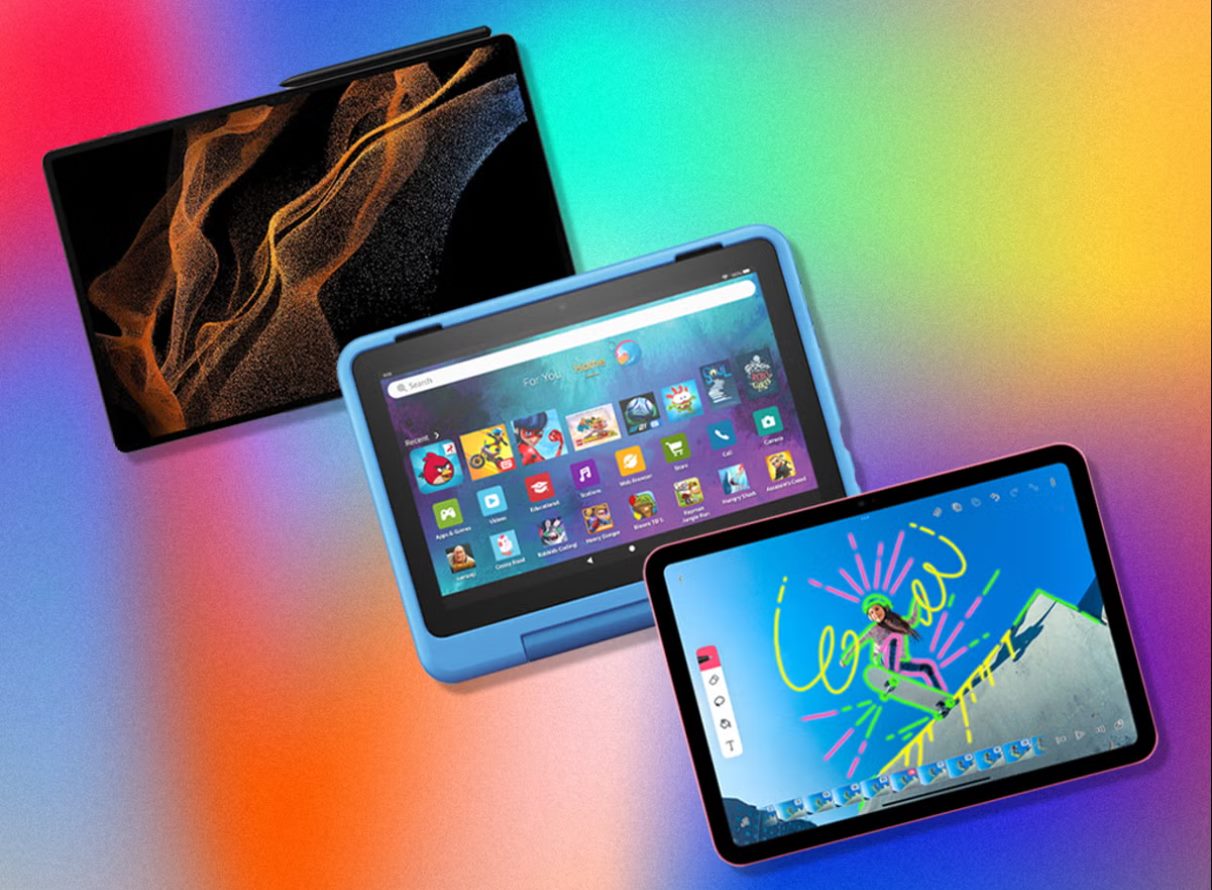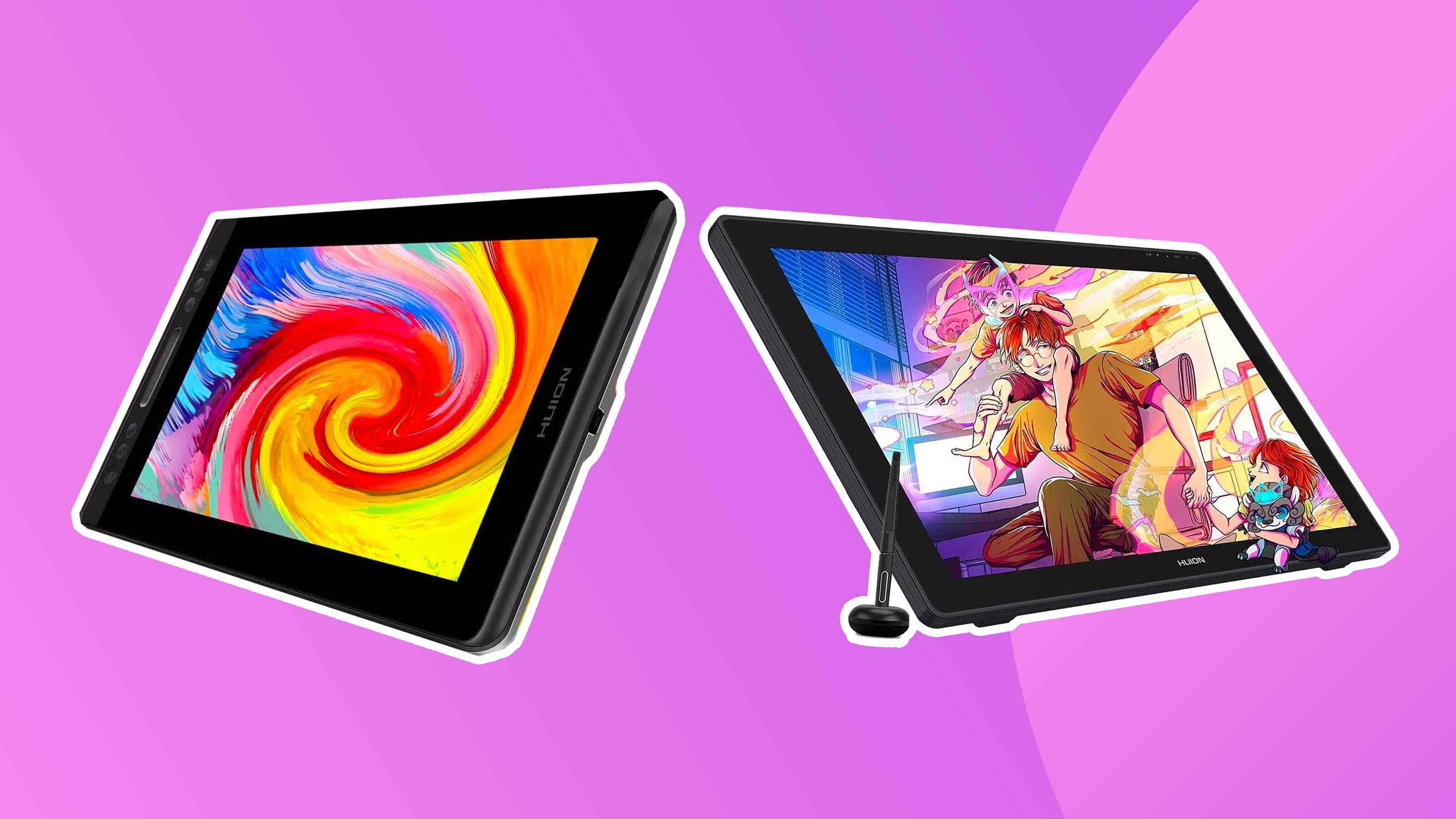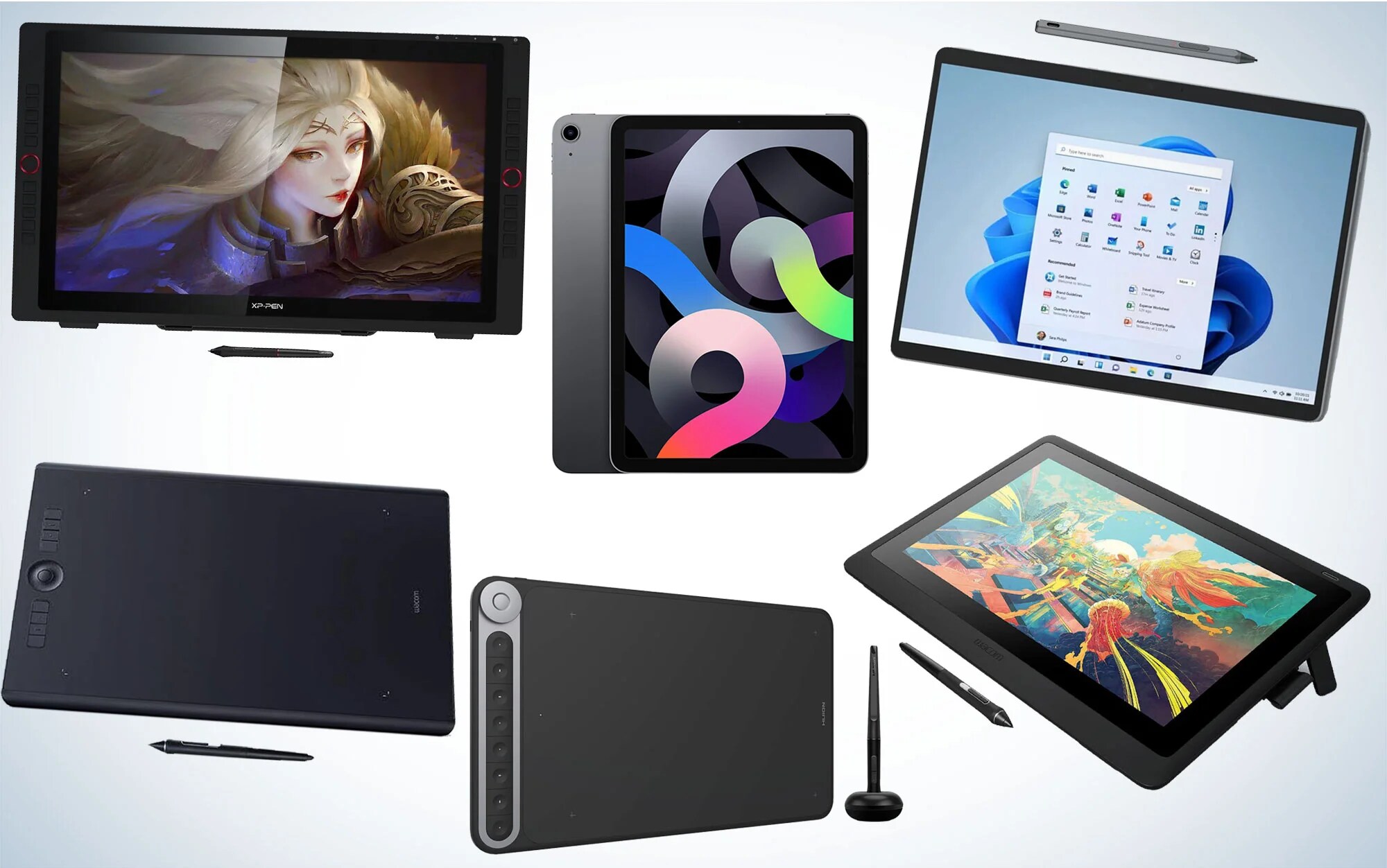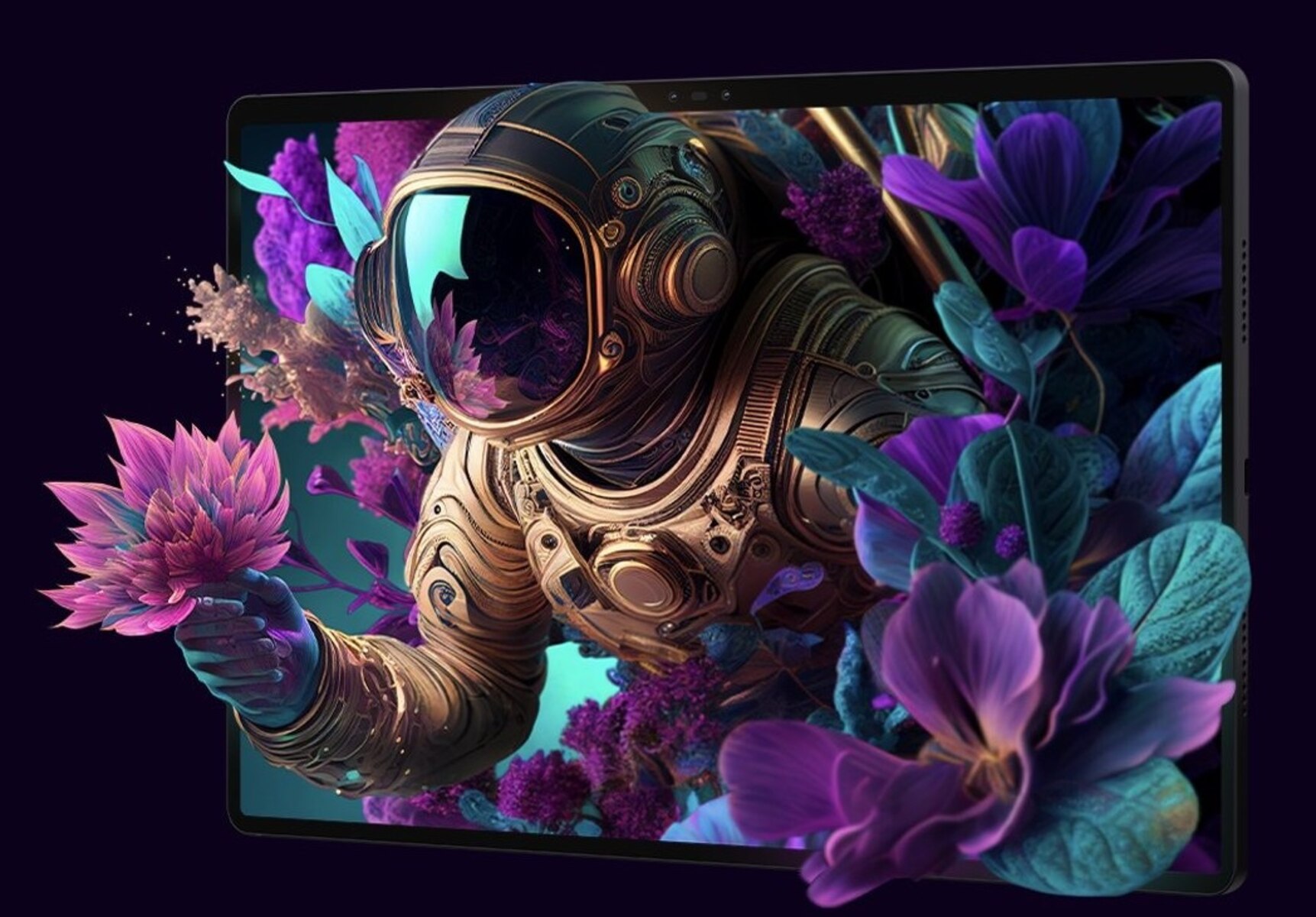Introduction
Welcome to the world of digital art! If you’re passionate about creating stunning illustrations or digital designs, then you’ve probably heard of drawing tablets. These powerful devices have revolutionized the way artists work, providing a seamless and intuitive experience that closely mimics traditional drawing and painting techniques. In this article, we will explore what drawing tablets are and why they have become an essential tool for artists of all levels.
A drawing tablet, also known as a graphics tablet or pen tablet, is a device that allows artists to create digital artwork directly on a flat surface using a stylus or pen-like input device. Unlike a typical computer mouse or trackpad, which can feel limiting and imprecise when it comes to artistic endeavors, drawing tablets offer a pressure-sensitive and highly responsive interface, providing artists with greater control and accuracy in their creations.
Whether you’re an aspiring artist, a professional illustrator, or someone who enjoys creating digital art as a hobby, a drawing tablet opens up a whole new world of creative possibilities. Whether you want to create stunning digital paintings, design intricate graphics, or sketch out ideas for animations, a drawing tablet can significantly enhance your artistic abilities and unleash your creativity like never before.
Throughout the rest of this article, we will delve deeper into the functionality and features of drawing tablets, explore the different types available, and discuss the benefits of using a drawing tablet for your artistic endeavors. We will also provide some tips for choosing the right drawing tablet for your needs and share popular brands that you can consider. So, let’s dive in and discover the amazing world of drawing tablets!
What is a Drawing Tablet?
A drawing tablet, also known as a graphics tablet or pen tablet, is a digital device that enables artists to create artwork, illustrations, and designs directly on a surface using a stylus or pen-like input device. It is essentially a flat rectangular surface that is pressure-sensitive and works in conjunction with a computer or mobile device.
The main components of a drawing tablet include the tablet itself, a stylus or pen, and software that communicates between the tablet and the computer. The tablet is typically connected to the computer via a USB cable or wirelessly, depending on the model.
One of the key features of a drawing tablet is its pressure sensitivity. This means that the tablet can detect the amount of pressure applied to the stylus, allowing for variations in line thickness, opacity, and brush size, which closely mimics the experience of traditional drawing tools. The tablet also provides a precise tracking of the pen’s movement, ensuring accurate and smooth lines.
Most modern drawing tablets have advanced features such as customizable buttons and touch strips, allowing users to access various functions quickly. These buttons can be programmed to perform specific actions like zooming in or out, changing brush sizes, or undoing and redoing actions, providing greater efficiency and workflow optimization.
Additionally, drawing tablets can come with different levels of sensitivity, usually measured in levels of pressure or tilt sensitivity. Higher levels of sensitivity enable artists to create more nuanced and expressive strokes, giving their artwork a realistic and organic feel.
While drawing tablets are primarily used by artists, they are also popular among photographers, designers, and animators. The ability to edit photos, create digital designs, and even animate characters using a drawing tablet provides an extra level of precision and control that traditional methods cannot achieve.
Overall, a drawing tablet offers a more intuitive and immersive experience for digital art creation. It bridges the gap between traditional art mediums and the digital realm, allowing artists to work more efficiently, express their creativity, and bring their ideas to life in stunning detail.
How Does a Drawing Tablet Work?
At first glance, a drawing tablet may seem like a simple device, but it involves a combination of hardware and software to function effectively. Let’s dive into the inner workings of a drawing tablet and understand how it works.
A drawing tablet consists of two main components: the tablet itself and the stylus or pen. The tablet is a flat surface that detects the movement and pressure applied by the stylus. This tablet connects to a computer or mobile device through a USB cable or wirelessly, depending on the model.
The tablet’s surface contains a grid of sensing elements, usually in the form of a matrix or an electromagnetic grid. When the stylus comes into contact with the tablet’s surface, these sensing elements detect the position and movement of the pen. These signals are then transmitted to the computer, where they are interpreted and displayed as digital lines or strokes.
The stylus or pen that comes with the drawing tablet is designed to work in conjunction with the tablet’s sensing technology. It often features pressure-sensitive capabilities, allowing artists to control the thickness and opacity of their strokes by varying the pressure applied to the pen.
To achieve this functionality, the stylus contains multiple sensors, including pressure sensors and sometimes tilt sensors. The pressure sensors detect the amount of pressure applied to the pen, while the tilt sensors detect the angle at which the pen is held. This information is then transmitted to the tablet, enabling it to capture the artist’s movements accurately.
Once the tablet has processed the input from the stylus, it sends the data to the computer or mobile device. Special software, often provided by the tablet manufacturer or compatible third-party applications, translates the input into digital lines, strokes, or gestures.
This software allows artists to select different brush styles, adjust colors, apply special effects, and perform various other functions to create their desired artwork. The digital canvas on the computer screen mirrors the movements made on the tablet’s surface, providing real-time feedback to the artist.
Some drawing tablets also come with additional features such as programmable buttons or touch-sensitive strips. These customizable components allow artists to assign specific functions or shortcuts to the buttons, streamlining their workflow and improving efficiency.
In essence, a drawing tablet works by translating physical pen movements and pressure into digital data, which is then rendered on a computer screen or mobile device. With its precision and responsiveness, a drawing tablet empowers artists to create digital artwork that rivals traditional methods while providing the added benefits of digital editing and manipulation.
Different Types of Drawing Tablets
When it comes to drawing tablets, there are several different types available in the market, each with its own unique features and functionalities. Let’s explore some of the common types of drawing tablets:
1. Graphic Tablets: Also known as pen tablets or digitizers, graphic tablets are the most basic type of drawing tablet. They consist of a flat surface and a stylus that interacts with the tablet. These tablets do not have a display of their own, so artists need to connect them to a computer or monitor to view their work. Graphic tablets are popular among beginners and professional artists alike for their affordability and versatility.
2. Pen Displays: Pen displays, also called monitor tablets or drawing monitors, have a built-in display where artists can directly draw or sketch on the screen itself. This eliminates the need for a separate computer or monitor. Pen displays provide a more natural and intuitive drawing experience as artists can see their artwork appear directly beneath their stylus. They are well-suited for professional artists who require accuracy and precision in their work.
3. All-in-One Tablets: All-in-one tablets combine the functionality of a pen display with the portability of a tablet computer. These devices are essentially tablet computers with a built-in digitizer and stylus support. All-in-one tablets are compact and lightweight, making them ideal for digital artists on the go. They offer the convenience of a tablet experience with the added benefit of drawing capabilities.
4. Mobile Tablets: Mobile tablets, such as the iPad or Android tablets, have gained popularity among artists due to their portability and touch-screen capabilities. While they are primarily designed for general use and entertainment, these tablets can be used for drawing and digital art with the help of specialized drawing apps. Although they may not offer the same level of precision as dedicated drawing tablets, mobile tablets are a convenient option for artists who want to sketch or create art on the move.
5. Graphic Tablets with Screens: Graphic tablets with screens are standalone devices that combine the features of a tablet computer and a drawing tablet. These tablets have a built-in operating system, allowing users to run various software applications directly on the device. Artists can draw, paint, and even edit their work without the need for a separate computer. Graphic tablets with screens offer a complete digital art solution, ideal for professional artists and illustrators.
It’s important to consider your specific needs and preferences when choosing a drawing tablet. Factors such as budget, portability, display size, pressure sensitivity, and software compatibility should be taken into account. Each type of drawing tablet has its advantages and disadvantages, so it’s essential to carefully research and test different models before making a final decision.
Benefits of Using a Drawing Tablet
Using a drawing tablet offers numerous benefits for artists of all levels. These devices have transformed the way digital art is created, providing a range of advantages over traditional drawing methods. Let’s explore some of the key benefits of using a drawing tablet:
1. Precision and Control: Drawing tablets offer precise and accurate tracking of pen movements, allowing artists to create intricate details and smooth lines with ease. The pressure sensitivity feature enables control over brush strokes, line thickness, and transparency, giving artists a level of control not easily achievable with traditional tools.
2. Natural Drawing Experience: Drawing tablets provide an intuitive and natural drawing experience, closely mimicking the feeling of drawing on paper. The stylus interacts directly with the drawing surface, making it feel more responsive and lifelike. This natural experience helps artists transition smoothly from traditional to digital art.
3. Efficiency and Workflow: Drawing tablets streamline the art creation process by enabling artists to work more efficiently. The customizable buttons and touch strips on the tablet can be programmed to perform various functions, such as changing brushes, zooming in or out, or undoing and redoing actions. This helps artists save time and focus more on their creative process.
4. Undo and Redo: With traditional drawing methods, rectifying mistakes can be challenging or even impossible. Drawing tablets allow artists to easily undo or redo their actions, providing the flexibility to experiment and make adjustments without fear of permanent damage to their artwork. This convenience empowers artists to take risks and explore new artistic possibilities.
5. Layers and Editing: Drawing tablets offer the ability to work with layers, which allow artists to organize their artwork and make changes without affecting the entire composition. Artists can easily add, remove, or adjust elements on separate layers, making it easier to experiment and refine their creations. Additionally, digital editing features enable artists to modify and enhance their artwork with ease.
6. Portability: Many drawing tablets are lightweight and portable, allowing artists to carry their digital art studio wherever they go. Whether it’s creating art on a train, in a café, or during travel, the portability of drawing tablets offers creative flexibility and convenience, making it easier to capture inspiration on the go.
7. Digital Tools and Effects: Drawing tablets provide access to a wide range of digital brushes, tools, and effects that can enhance and transform artwork. Artists can experiment with different brush styles, textures, and effects to create unique and visually impactful pieces. These digital tools offer endless creative possibilities that are not available with traditional drawing methods.
Whether you’re a professional artist, an aspiring illustrator, or someone who enjoys creating digital art as a hobby, a drawing tablet opens up a world of creative opportunities. It enhances artistic abilities, improves workflow efficiency, and allows for experimentation and artistic growth. The benefits of using a drawing tablet make it an indispensable tool for digital artists in today’s technologically advanced world of art.
Key Features to Consider When Choosing a Drawing Tablet
Choosing the right drawing tablet can greatly impact your artistic experience and productivity. With a wide range of options available, it’s essential to consider certain key features that will best suit your needs. Here are some important factors to consider when selecting a drawing tablet:
1. Pressure Sensitivity: Look for a tablet with high levels of pressure sensitivity. This feature allows you to control the thickness and opacity of your strokes based on how hard or lightly you apply pressure with the stylus. Higher sensitivity levels provide more precision and a greater range of creative possibilities.
2. Resolution and Accuracy: The tablet’s resolution and accuracy determine the level of detail and precision that can be achieved. Higher resolution and accuracy ensure that the tablet accurately captures your pen movements and translates them into digital strokes with minimal lag or distortion.
3. Active Area Size: Consider the size of the tablet’s active area, which is the area on the tablet’s surface where you can draw. A larger active area provides more room for your artistic expression and allows for smoother and more comfortable movements. However, personal preference and workspace limitations should also be taken into account.
4. Display Type: If you prefer a drawing tablet with a built-in display, consider the type of display it offers. IPS LCD displays provide better color accuracy and wider viewing angles, while OLED displays offer enhanced contrast and deep blacks. Choose a display type that suits your artistic requirements.
5. Connectivity: Check the connectivity options available for the drawing tablet. Most tablets connect to a computer through USB cables or wirelessly via Bluetooth or Wi-Fi. Ensure that the tablet is compatible with your computer or device to avoid any compatibility issues.
6. Customizable Buttons: Some drawing tablets come with customizable buttons or express keys. These buttons can be programmed to perform specific functions or shortcuts, allowing you to access commonly used features quickly. Consider the number and placement of these buttons based on your workflow preferences.
7. Software Compatibility: Check if the drawing tablet is compatible with the software applications you intend to use for your digital art. Most drawing tablets work well with popular software such as Adobe Photoshop, Illustrator, and Corel Painter. Ensure the tablet is compatible with your preferred software for a seamless creative experience.
8. Budget: Finally, factor in your budget when selecting a drawing tablet. Set a realistic budget range and consider the features that are most important to you. It’s possible to find drawing tablets that offer a good balance of performance and affordability, catering to a range of budgets.
By considering these key features, you can narrow down your options and choose a drawing tablet that best fits your artistic needs and preferences. Remember, selecting the right drawing tablet is a personal choice, so take the time to research and try out different models before making your final decision.
Popular Brands of Drawing Tablets
When it comes to drawing tablets, there are several reputable brands that have established themselves as leaders in the industry. These brands offer a wide range of drawing tablets with varying features and price ranges. Here are some popular brands to consider when looking for a drawing tablet:
1. Wacom: Wacom is arguably one of the most recognized and trusted brands in the drawing tablet market. Known for their quality and reliability, Wacom offers a range of tablets, from entry-level options to professional-grade devices. Their tablets come with high levels of pressure sensitivity, accurate stylus tracking, and customizable buttons. Wacom drawing tablets are often the preferred choice for professional artists and designers.
2. Huion: Huion has gained recognition for providing affordable drawing tablets without compromising on quality. Their tablets offer a good balance of performance and value, making them popular among beginners and budget-conscious artists. Huion tablets come with various pressure levels, customizable buttons, and different tablet sizes to suit different preferences and needs.
3. XP-Pen: XP-Pen specializes in producing drawing tablets that cater to a wide range of artistic needs. Their tablets offer excellent pressure sensitivity, high accuracy, and come with customizable buttons and touch strips for enhanced workflow. XP-Pen tablets are known for their durability and affordability, making them popular among artists of all levels.
4. Apple: Apple’s iPad Pro, paired with the Apple Pencil, has become a popular choice for digital artists. The iPad Pro’s Retina display and the advanced functionality of the Apple Pencil create a seamless and responsive drawing experience. With a variety of drawing apps available on the App Store, the iPad Pro offers versatility and portability for artists who prefer a mobile drawing solution.
5. Samsung: Samsung’s Galaxy Tab series, combined with the S Pen, provides an excellent drawing experience for artists on the Android platform. The tablets boast vibrant displays, powerful performance, and compatibility with various drawing apps. Samsung tablets are known for their reliability and offer a wide range of models to suit different budgets and preferences.
6. Microsoft: Microsoft offers the Surface Pro series, which combines tablet functionality with the power of a full-fledged PC. The Surface Pen provides accurate and responsive stylus input, making it a popular choice among digital artists. The devices’ versatility, portability, and compatibility with professional software like Adobe Creative Cloud make them a solid option for artists seeking a versatile tool.
These are just a few of the many reputable brands in the drawing tablet market. It’s essential to research and compare different models within these brands to find the one that best suits your artistic style, preferences, and budget. Consider your specific needs and read reviews to ensure you select a drawing tablet that will enhance your artistic workflow and creativity.
Tips for Using a Drawing Tablet
Using a drawing tablet can take some getting used to, especially if you’re transitioning from traditional drawing methods. To help you make the most of your drawing tablet and enhance your digital art experience, here are some useful tips:
1. Practice Hand-Eye Coordination: Hand-eye coordination is crucial when using a drawing tablet. Spend time practicing and getting familiar with the tablet’s response to your pen movements. Start with simple exercises to improve your accuracy and precision.
2. Explore Different Brushes and Settings: Most drawing software offers a wide range of brushes and settings. Take the time to explore and experiment with different brushes to find the ones that suit your style. Adjust brush settings like size, opacity, and flow to achieve the desired effect.
3. Use Shortcut Keys: Take advantage of any customizable buttons or express keys on your drawing tablet. Program these keys to perform frequently used functions, such as zooming, erasing, or changing brush sizes. This can save you time and improve workflow efficiency.
4. Try Different Pressure Sensitivity: Each drawing tablet has its own pressure sensitivity settings. Find the pressure level that works best for you by adjusting the sensitivity in the software settings. Experimenting with different pressure levels will help you achieve the desired line thickness and opacity.
5. Use Layers: Take advantage of the layer feature in your drawing software. Working with layers allows you to separate elements, make changes without affecting the entire composition, and experiment with different effects or colors. It also makes it easier to undo or modify specific parts of your artwork.
6. Save Frequently: Remember to save your work regularly. Although digital art can be easily edited and restored, unexpected power outages or software crashes can cause data loss. Save your progress frequently to avoid losing hours of hard work.
7. Experiment with Textures and Effects: Drawing tablets offer various digital tools and effects that can enhance your artwork. Experiment with different textures, patterns, and effects to add depth and visual interest to your creations. Explore blending modes, gradients, and layer effects to bring your artwork to life.
8. Join Art Communities and Forums: Connect with other artists using drawing tablets by joining online art communities and forums. Share your work, ask for feedback, and learn from others who have mastered the art of digital drawing. Engaging with the community can inspire you and provide valuable insights and techniques.
9. Practice Regularly: Like any skill, regular practice is essential to improve your digital art abilities. Set aside dedicated time for practicing and experimenting with your drawing tablet. The more you practice, the more comfortable and proficient you will become with using the tablet and achieving desired artistic effects.
10. Have Fun and Be Patient: Using a drawing tablet may come with a learning curve, but remember to enjoy the process and be patient with yourself. Learning new techniques and mastering digital art takes time and practice. Embrace the journey and allow yourself to experiment and make mistakes along the way. Ultimately, it’s about expressing your creativity and enjoying the artistic experience.
By following these tips and consistently practicing, you will gradually improve your skills and unlock the full potential of your drawing tablet. Embrace the digital medium, explore different techniques, and let your creativity soar!
Conclusion
Drawing tablets have revolutionized the way artists create digital art, providing a seamless and intuitive experience that closely mimics traditional drawing and painting techniques. These devices offer numerous benefits, including precision and control, a natural drawing experience, efficiency and workflow optimization, and the ability to experiment with a wide range of digital tools and effects.
When choosing a drawing tablet, consider key features such as pressure sensitivity, resolution and accuracy, active area size, display type, connectivity options, customizable buttons, software compatibility, and budget. Reputable brands like Wacom, Huion, XP-Pen, Apple, Samsung, and Microsoft offer a variety of drawing tablets to cater to different artistic needs and preferences.
To make the most of your drawing tablet, practice hand-eye coordination, explore different brushes and settings, utilize shortcut keys, experiment with pressure sensitivity, work with layers, save your progress frequently, and engage with art communities and forums for inspiration and learning. Regular practice and patience are keys to unlocking your full potential as a digital artist.
Whether you are a professional artist, an aspiring illustrator, or simply passionate about digital art, a drawing tablet allows you to unleash your creativity and bring your ideas to life with precision and control. Embrace the possibilities, experiment with new techniques, and enjoy the wonderful world of digital art with your drawing tablet.







